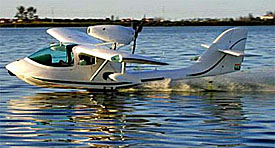
Airmax SeaMax, a current SLSA seaplane from Brazil.
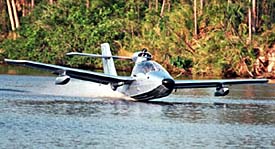
The all-metal Mermaid, an early entry and one that has achieved SLSA airworthiness.
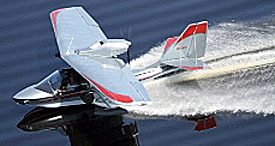
Progressive Aerodyne’s SeaRey, based in central Florida, is nearing completion of its SLSA project.
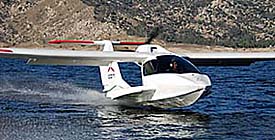
Icon’s deftly marketed A5 LSA seaplane.
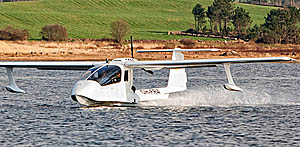
Colyaer’s Freedom S100 plans a return to the U.S. market.
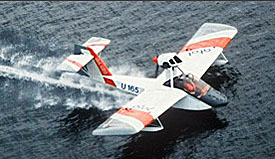
Finland’s mostly wood airframed Atol amphibian.
What’s going on out in the marketplace? More than any time since the launch of Light-Sport Aircraft in 2004, I have not observed such a frenzy of activity for a particular niche, this time for LSA seaplanes. Next season, in 2013, we could see no less than nine entries; three brand new and that count does not include any LSA equipped with floats, possibly adding several more. Yet some major potholes appear in the runway… or perhaps that should be waves sloshing over the bow.
One entry is a return of a LSA seaplane previously seen in the USA as the Freedom S100 (SLSA List #44) yet can it reenter the market without a full FAA audit? See Update at end. A new agency directive with the catchy name 8130.2G CHG 1 may require a FAA visit to Spain but who knows when that might occur, given the likelihood of an FAA budget cut through the political process known as sequestration, part of the so-called “fiscal cliff” the mainstream media drones on about endlessly. The order issued by FAA on July 2nd stops the issuance of an airworthiness certificate for any new model or a first model from a new company until FAA approves it. Since a visit to an overseas factory also requires negotiation between FAA and the visited country’s national aero authorities, months of delay could result.
Apparently undaunted by looming federal government inspection, a bevy of new LSA seaplanes are being prepared, a fact that further amazes me given the uncertain economic environment. Let’s take a quick race through the nine possible LSA seaplanes.
First are two models that have already achieved SLSA status: The Airmax SeaMax and the all-metal Mermaid, formerly by Czech Aircraft Works. The latter has rebirthed into a new entity that could soon arrive on the scene though because it’s a new company we return to that FAA audit business. Company officials are ASTM-savvy, have been through an earlier audit, and may be ready… if they can get a visit anytime soon. Meanwhile the SeaMax, a fine and modern composite machine with strong performance, may be the only one fully ready now, presuming they make no major changes that FAA would consider a new model. If they do make major changes, all bets are off as Airmax is based in Brazil and we’re back to the FAA visit delay problem. See Update at end.
Next is the all-American SeaRey. This popular kit with some 600 sold and 500+ flying is close to being ready after a long period of preparation. FAA is already planning a visit in late October and the central Florida manufacturer is reportedly ready for the visit or will be by the time the friendly FAA team shows up with their laptops.
The LSA seaplane market sometimes appears to be dominated by Icon Aircraft and their extravagantly-marketed A5 amphibian. Based on reported orders of more than 700 units (a figure only exceeded by Cessna’s onetime 1,000 Skycatcher orders), perhaps that assessment is correct. However, the numerical fact of Icon’s success is generating action in several other projects. In a recent announcement Icon said first deliveries could occur in 2013.
I’ve written about a Finland-based seaplane called the Atol with many years of history. They might be prepared to face an FAA audit team, but we return again to a potentially long delay before FAA can visit the Scandanavian country. The mostly-wood seaplane has achieved some European certifications and that will help but not fully suffice.
So that’s six “existing” LSA seaplanes — SeaMax, Mermaid, SeaRey, Freedom, A5, and Atol. Then we come to three brand-new projects, which I’ve promised not to identify (yet). All would seem to be well down the FAA inspection waiting list offset by two important factors. First, all three are being hatched by knowledgeable folks who are highly conversant with ASTM standards and each may feel prepared to successfully complete an audit. Secondly — and perhaps even more importantly, given the FAA visit conundrum — all three are U.S.-based operations. At least one is getting major components from outside the USA but if production is properly done in America, such foreign sourcing poses no problem and because all three are U.S.-based, they could see an FAA visit in a “reasonable” time (whatever that may mean given the budget sequestration cited above).
By any measure, the bringing to market of nine LSA seaplanes appears to have obstacles. Yet such challenges are precisely what inspire many entrepreneurs. Added to floatplanes like the Flight Design CTLS Floatplane or the Tecnam Eaglet on floats and several seaplane weight shift LSA plus factoring the entry of major manufacturer Wipline Floats along with other established float makers like Zenair and new re-entry, Lotus, one thing seems certain in our uncertain world: LSA enthusiasts should have no lack of water-borne airplanes… assuming the FAA doesn’t overwhelm them with a tidal wave of paperwork or beach them with months-long audit delays.
Update 10/3/12 — Some clarification is needed regarding the need for a mandatory FAA visit. The improved news? Not in all cases will a full audit be required. When Washington, DC headquarters’ Certification Branch evaluates a change to an aircraft, they can elect not to conduct a full top-to-bottom audit visit, instead sending an FAA employee, an Air Safety Investigator from a regional office, for a somewhat less intensive review. This equates to less delay and less time involved to verify the change. A judgment of “new model” will still require the more thorough review.
FAA also confirmed, again, that the intention remains to encourage industry to provide compliance oversight under details to be confirmed. As with all things in the LSA world, exact plans continue to be developed as the industry and its products evolve. Finally, the major FAA order announced at Oshkosh is still coming though it has been delayed from its predicted September release date. That order is not the same as the 8130.2G CHG 1 order referenced above. Confused? Don’t feel badly. We are all still learning exactly how this LSA phenomenon will work, but I am encouraged by today’s conversation that FAA does not want to prevent new development nor prevent LSA businesses from operating. That’s a mighty healthy statement to make. —DJ


Leave a Reply